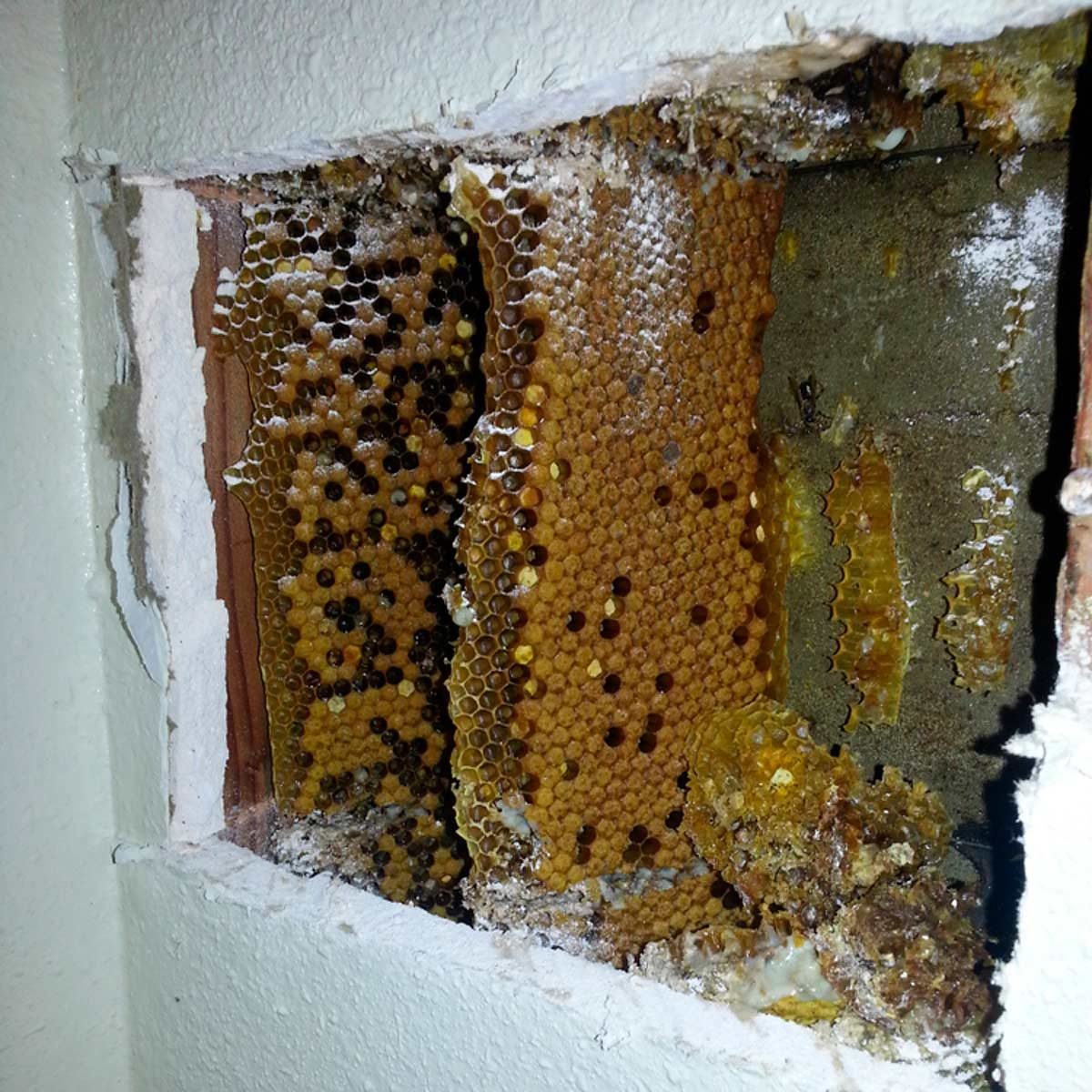Why Do Some Old Homes Have a Beehive Built Into a Wall?

A Beehive in the Wall?
While renovating an old home, some have uncovered this strange scenario: a beehive attached on a wall of the home! It may at first seem like a totally alarming occurrence, but these hives and their placement once had an important role.
The Discovery
Back in 2007, Robert Brackley Jr. was dismantling what was known as the Thomas House on the campus of the University of Maine at Farmington when he stumbled upon a beehive, built between wall studs, near a chimney.
Near the bottom of the hive was a wooden plug, firmly set in the hole, which Brackley believed to be how the bees entered the hive. He found honeycomb still on the outside of the hive.
The Beehives Purpose
“It seems bizarre,” he said, “but it looks like the people built it into the wall and when they wanted honey, they would go up and get it.” Brackley was, indeed, absolutely correct!
Built-in beehives were installed in homes in order to benefit the beekeeping homeowner. Behind the wall, bees could move freely through the pipes that were installed there, making honey. When someone wanted honey in the kitchen downstairs, they could go upstairs, remove the back of the hive and take what they needed.
If you have an old house with a random toilet in the basement, here’s why.
Wall Beekeeping
Up until recently, beehives were a part of the architecture of mountain homes in the Himalaya Mountains of Northwest India, built into the thick outside walls. “Traditionally wild colonies of bees found the hive themselves, or farmers brought a log with a hive in it from the surrounding forest so the inhabitants could set up shop in the village and produce honey for their human caretakers,” notes blogger Christina Selby for Vox.
Simply put, the practice is called “wall beekeeping,” and people like Susan Chernak McElroy are all about it.
“I have been calling it my Observation Hive because it has a plexiglass cover on the inside wall, but my ancient ancestors have been keeping such hives—called walled hives—for millennia,” says McElroy. “I know this now because of a fascinating Bee World article from 1998 by Eva Crane that details wall hives and wall hive beekeeping in some 20 warm-temperate old world countries, a practice that dates back to at least AD 60.”
Ready to modernize? Here are 10 ways to take advantage of new technology in your old house.
Preserving a Wall Hive
McElroy had carpenters cut out the drywall and insulation between two framing studs in her bedroom wall by the window, clean the cavity down to its original 1930s wood and shingling. Then they added a piece of plexiglass with a small door at the bottom where she can feed the bees if necessary. “Over the plexiglass, I placed a light-proof, thick quilting so the bees can work in darkness and privacy.”
Here’s how your old home can save big money with an HVAC update.
Wall Hives Benefit the Bees
Throughout the ages, bees were placed in the house and barn walls in construction typically made of stone. The hives were about 12-inches wide, 17-inches tall and 9-inches deep. Soft stone was carved out to make a hollow, which was typically covered with wood used as a door to the hive. You could find these doors on either the outside or inside wall of the house.
“It was noted in old writings that bees fared especially well in wall hives, probably owing to the better warmth in winter and probably cool in summer of old stone, brick, or adobe-comb homes,” says McElroy.
Many old homes have perplexing features that baffle their modern-day owners. Here we’ve solved 15 of those mysteries!
No comments